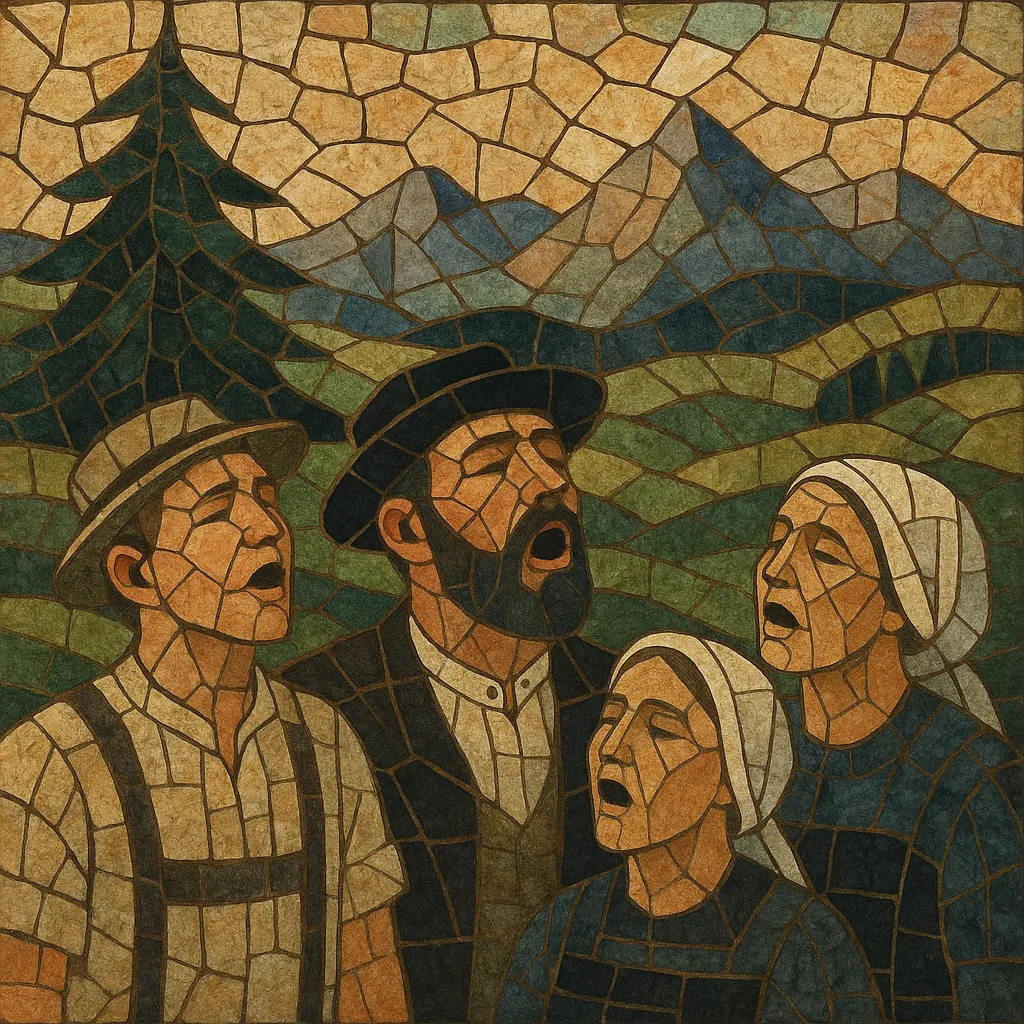
Naturjodel (natural yodel) is a traditional, largely wordless, multi-part vocal style from the Swiss Alps, especially the Appenzell and Toggenburg regions. It features the characteristic switch between chest and head voice across the vocal break and uses open vowel syllables rather than text.
Unlike the faster, dance-linked or popular yodel song, naturjodel is typically unaccompanied, slower, and often free in meter. A lead voice intones long, melismatic phrases while companion voices sustain drones or move in gentle parallel lines, creating shimmering overtones in resonant Alpine spaces. The effect is spacious, pastoral, and contemplative, evoking its origins as a herders’ call that also became a communal art of village choirs and family ensembles.
Naturjodel arose in the rural Alpine soundscape as a practical and expressive form of herders’ calling that took advantage of natural echoes across valleys. By the 19th century, the practice had crystallized in Appenzell (Zäuerli) and Toggenburg as a distinctive, wordless, multi-part singing tradition, transmitted orally within families and village choirs.
Appenzell’s Zäuerli is noted for very slow, free-flowing lines and a luminous drone foundation. Toggenburg styles share the same wordless, melismatic character but may favor slightly different voicings and local variants of melodic turns. These practices developed independently from the popular “yodel song” (with verses and refrains), remaining closer to communal folk usage and shepherd culture.
Through the late 19th and early 20th centuries, naturjodel moved from pastures into festivals and formal choirs, becoming a symbol of Swiss regional identity showcased by yodel clubs and national folk events. Collectors and educators began to notate and archive melodies, while ensembles preserved local dialects of style and tuning.
Postwar urbanization and media popularized lighter yodel entertainment, yet naturjodel continued in parallel through family ensembles, regional choirs, and dedicated artists. Since the late 20th century, foundations, festivals, and schools in Appenzell and Toggenburg have supported teaching, documentation, and new compositions in the naturjodel idiom, ensuring continuity while encouraging careful innovation.

